Arctic survival kit: How Russian soldiers cope with cold in the Far North
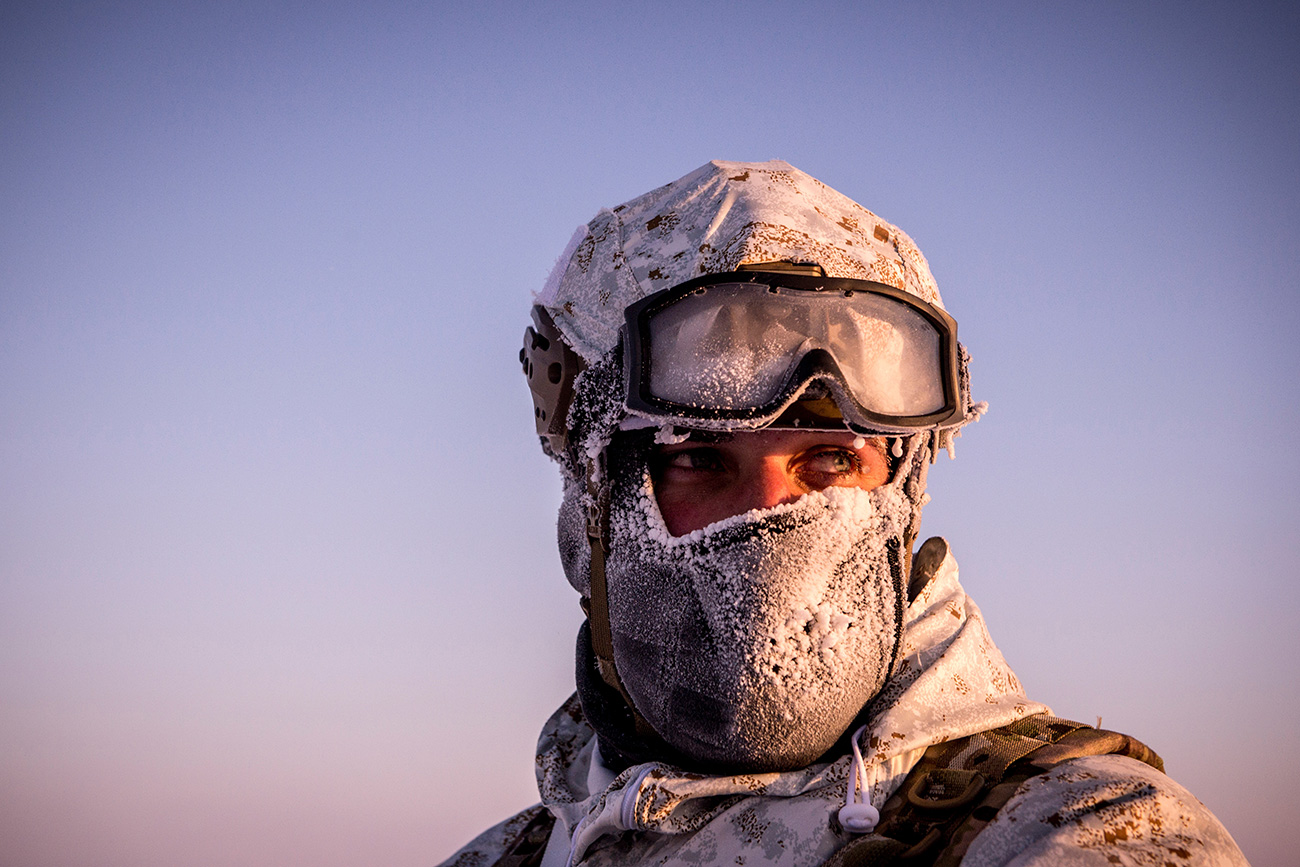
A fighter of a special operations unit during a drill near the North Pole.
Valeriy Melnikov/RIA NovostiLast year Russian servicemen conducted several large drills in the Arctic in order to check their readiness for combat in the extreme weather conditions of the Far North.
Summers in the Arctic are short - a couple of weeks at best - with rain and snow during the rest of the year, and it is always cold, even if the sun is shining.
Last year paratroopers practiced a dramatic exercise where they were dropped directly onto the North Pole. It had been planned for April, a period when severe northern winds lash the Arctic and blizzards prevent event short expeditions across the snow-covered vastness. But if a military crisis occurs, Russia's elite airborne forces must be ready for combat action at any location - including the Arctic. This is precisely what the drills were designed to prepare for.
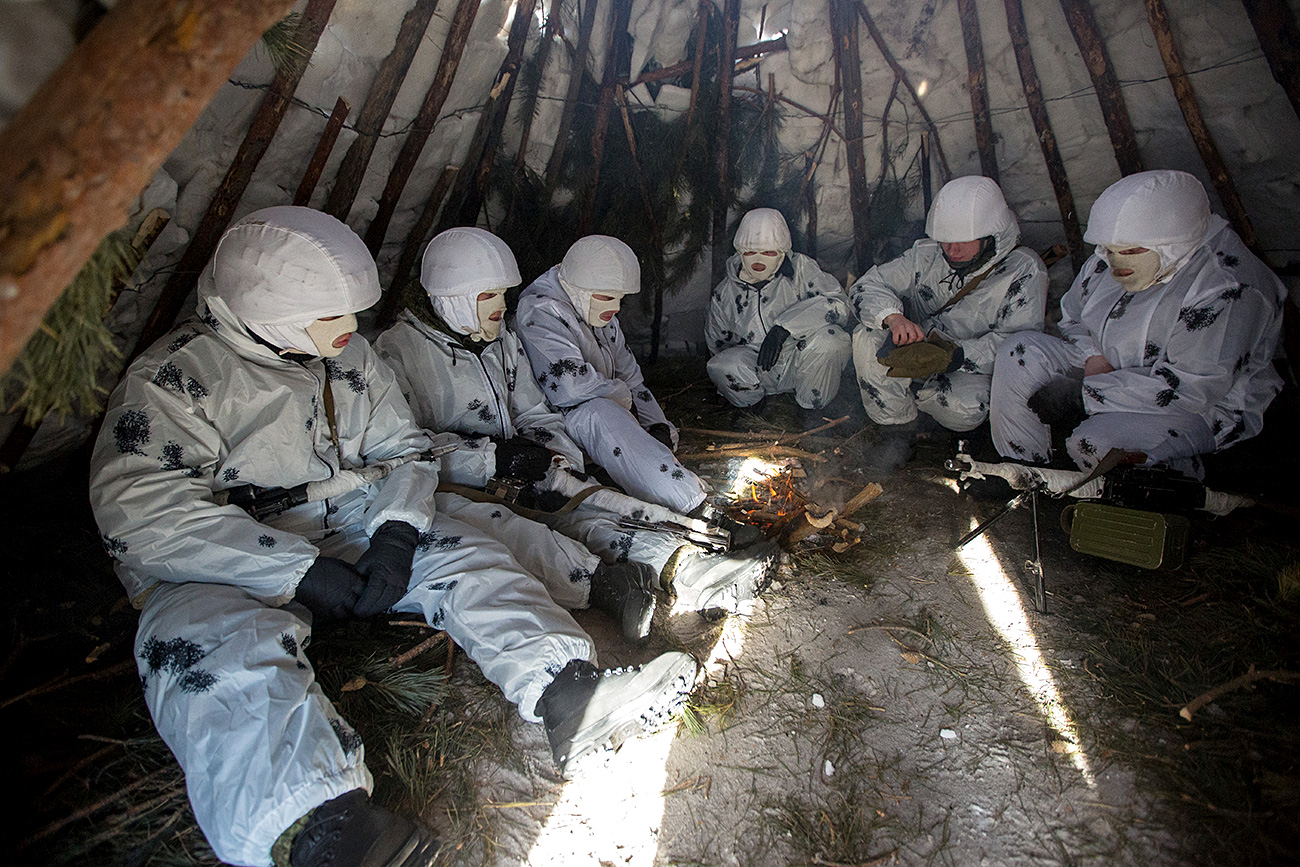 Cadets in the unique Russian Arctic infantry Marshal Rokossovsky Far East Higher Command School during training exercises. / Igor Ageyenko/RIA Novosti
Cadets in the unique Russian Arctic infantry Marshal Rokossovsky Far East Higher Command School during training exercises. / Igor Ageyenko/RIA Novosti
For the first time in history the airborne troops landed on a drifting ice floe in the region of the North Pole without special preparation. The drop zone was not predetermined and no reconnaissance was carried out. No equipment was delivered to the site before the drill; the paratroopers carried all that they needed with them.
The parachute troops reached the pole but the Defense Ministry was unable to evacuate them because of a sudden deterioration in the weather at the drop zone that left 150 servicemen stranded on the drifting ice floe near the North Pole.
 A two-unit tracked transport vehicle seen as new weapons and military and special equipment are tested in the Arctic. / RIA Novosti
A two-unit tracked transport vehicle seen as new weapons and military and special equipment are tested in the Arctic. / RIA Novosti
Northern outfits
The situation was met with stoicism in the Defense Ministry. The soldiers and officers were wearing special uniforms created for the Arctic. Their expedition backpacks contained sets of high-calorie food, as well as new life support equipment made especially for working in extreme conditions.
As the Defense Ministry explained, the new Arctic uniforms worn by the troops help them work in low temperatures. The uniforms protect servicemen even if they fall through the ice into freezing water:
Soldiers swimming in their uniforms in the Arctic / YouTube
"The special Arctic military uniform set contains 13 items," says Vadim Kozyulin, a professor of military sciences. "They are supposed to protect the servicemen from long-term exposure to cold, fierce winds, rain and snow. The outfits are ergonomic. This helps troops wear a special Arctic bulletproof vest that does not interfere with the use of their rifle."
The outfit's camouflage pattern distinguishes it from the traditional Russian field uniform. On the Arctic uniform this pattern consists of a pixel drawing made of gray, greenish and black dots imitating polar reindeer moss. Wearing this uniform, a soldier cannot be seen among cliffs and rocks and blends perfectly with snowy hummocks.
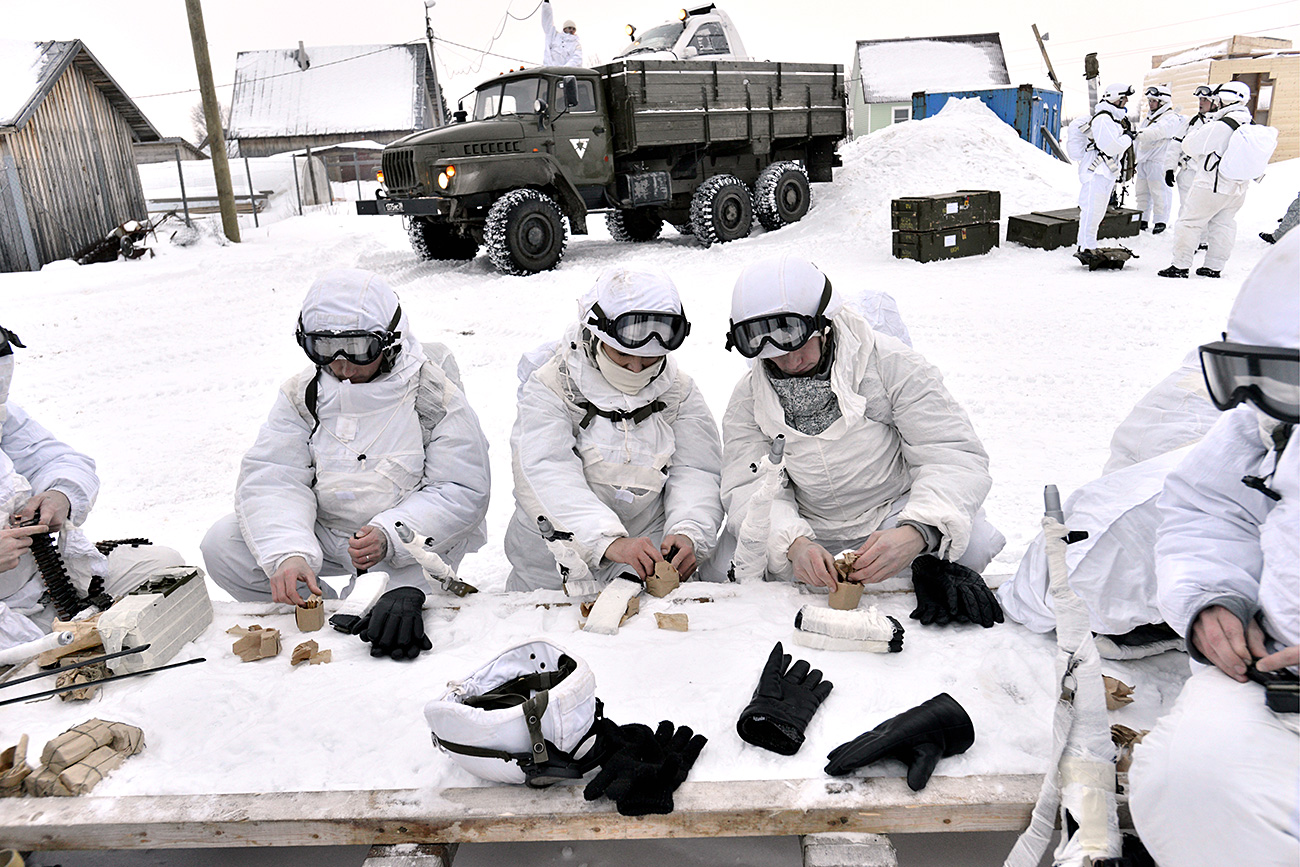 Russian Northern Fleet's Arctic mechanised infantry brigade conducts military exercises to learn how to ride a reindeer and dog sleds at a reindeer farm near the Lovozero settlement. / Lev Fedoseyev/TASS
Russian Northern Fleet's Arctic mechanised infantry brigade conducts military exercises to learn how to ride a reindeer and dog sleds at a reindeer farm near the Lovozero settlement. / Lev Fedoseyev/TASS
The uniform is adaptable to any weather. "The three-layer thermo-underwear protects the serviceman from the cold. And if it becomes warm, he can replace the jacket with a fleece hoodie or vest," Kozyulin added.
Besides the traditional "Soviet" earflap hat, paratroopers also have special helmet-masks that look like balaclavas but have heat transfer elements.
"The mask covers the entire face, leaving only slits for the eyes. In it the soldier can breathe freely and not be afraid of catching a cold in his lungs in the frost. The special material from which the jackets, pants and footwear are made will help the soldiers and officers survive even at minus 60 degree Celsius and winds of 15 meters per second," Kozyulin noted.
Frozen foods
A special diet has been developed to help troops survive in the north: each daily ration contains 5,000 calories, compared with 3,000 calories that regular serviceman are issued with.
Besides the traditional army diet, the backpack that soldiers carry in the north contains "classic" sandwiches with lard and high-calorie salami, as well as fruit drinks and concentrated cocoa chocolate.
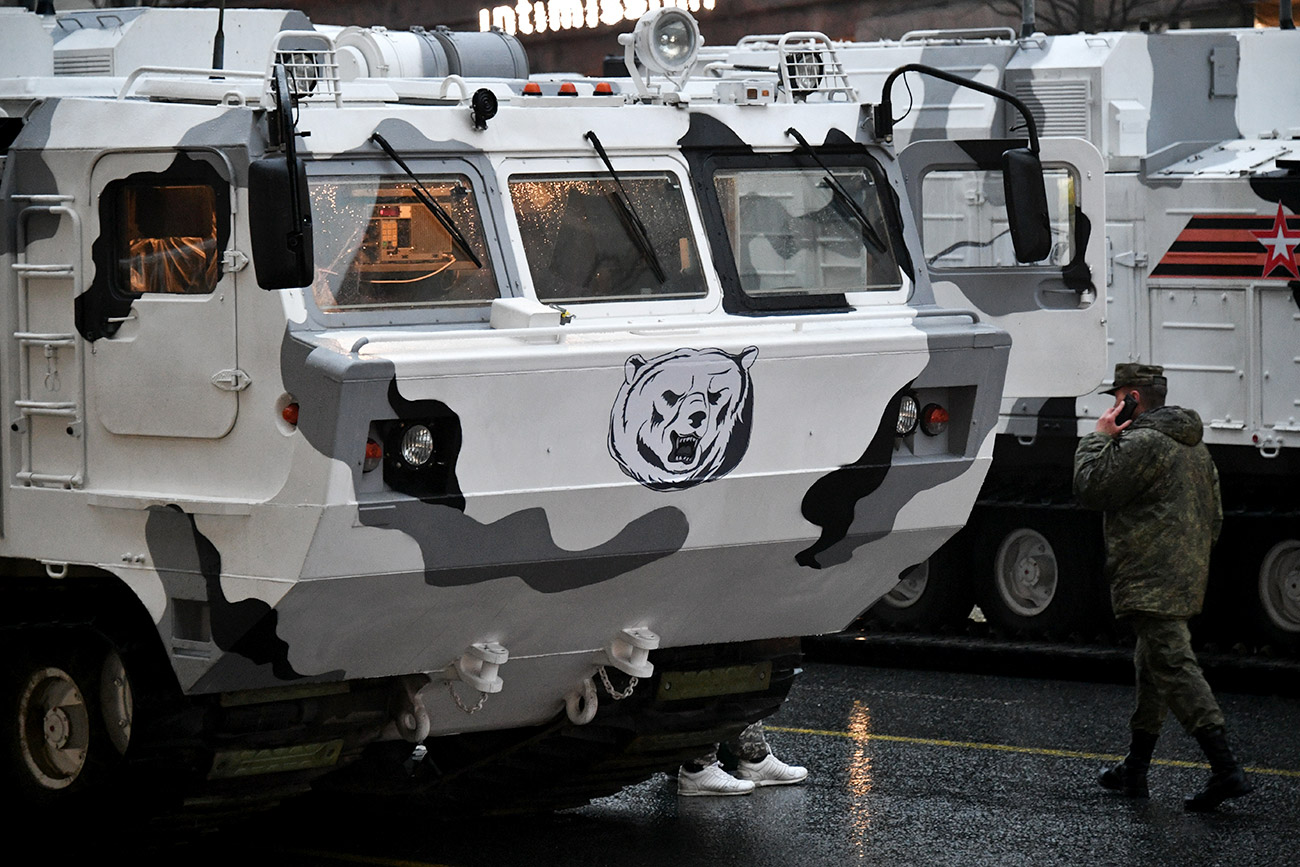 A Pantsir SA gun/missile system based on the chassis of the DT-30 articulated all-terrain tracked vehicle is seen here as a motorized parade column drives along Tverskaya Street heading to Red Square for a Victory Day Parade practice. / Maksim Blinov/RIA Novosti
A Pantsir SA gun/missile system based on the chassis of the DT-30 articulated all-terrain tracked vehicle is seen here as a motorized parade column drives along Tverskaya Street heading to Red Square for a Victory Day Parade practice. / Maksim Blinov/RIA Novosti
If the troops have to remain in extreme conditions for a long period, they are given additional rations and vitamins to stimulate their immune system.
"The soldier must know how to heat up his food even in minus 50 degree temperatures. This is why their knapsacks are equipped with field kitchen 'matryoshkas', which, like the [traditional nesting doll] toys, conceal two or three boiling containers," said Victor Murakhovksy, editor-in-chief Arsenal Otechestva magazine.
Where are Russia's Arctic bases?
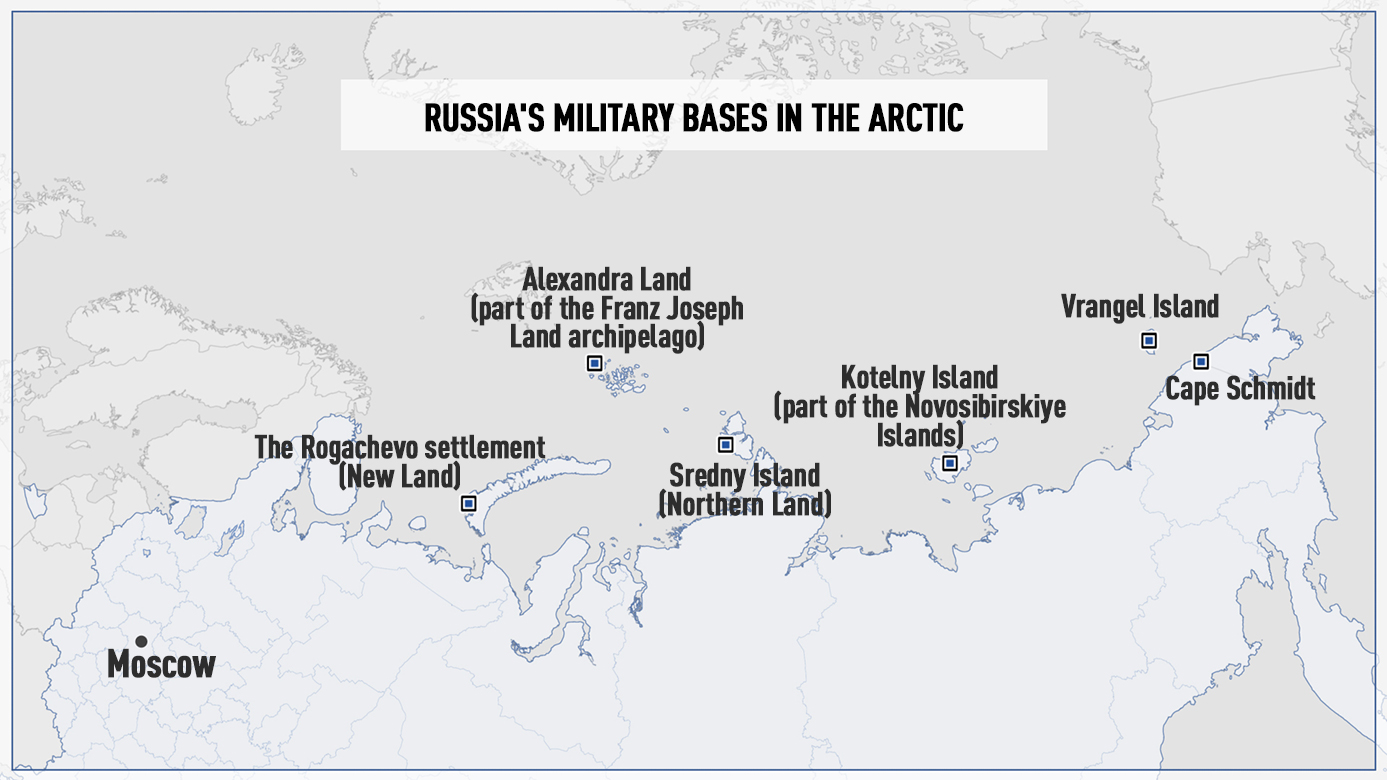 Stepan Zharky
Stepan Zharky
Russia has six military bases in the north. Furthermore, there are more than 10 military airports, anti-aircraft missile system positions and military ports. This infrastructure operates 24 hours a day, regardless of the season and the weather. Its key objective, according to experts, is to protect Russia's borders and economic interests.
"NATO vessels with Aegis Combat System and BGM-109 Tomahawk cruise missiles patrol the region on a regular basis. These weapons are capable of reaching the positions of our strategic missile systems in Siberia only from this region. Consequently, today Russia must 'close' the anti-missile umbrella in this region and prepare its land forces, which must be capable of effectively carrying out missions in minus 50-degree blizzards," Murakhovsky said.
Read more: Are Russians immune to freezing and frigid temperatures?
If using any of Russia Beyond's content, partly or in full, always provide an active hyperlink to the original material.
Subscribe
to our newsletter!
Get the week's best stories straight to your inbox